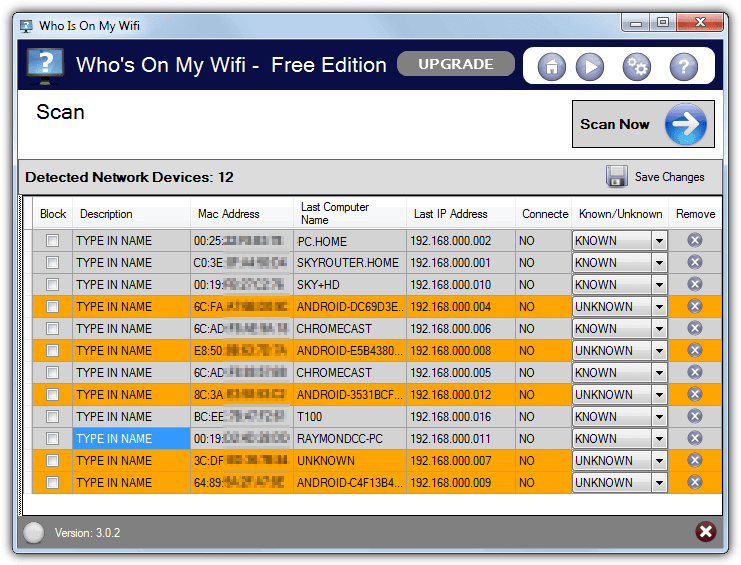
You can also see what executable are involved in creating each connection by using the -b switch with the netstat command ( netstat -b) You should be able to easily spot any addresses (Foreign column) that is outside the DHCP range on your router and investigate. To find your IP Address, just enter ipconfig at the command prompt. Netstat shows you the type of connection (TCP or UDP), IP Address and port number (number after addresses separated by a colon) for both Local (your computer) and Foreign addresses. This will allow you to see all IP Addresses that have made a connection to your computer.

Netstat is a useful tool that displays network connections (both incoming and outgoing) on computers. N = Displays addresses and port numbers in numerical form To do this, open a command prompt and enter the following command:Ī = Displays all connections and listening ports
#SEE WHOS ON MY WIFI MAC PC#
If they did their homework (you can be sure of that), they probably figured out the range of IP Addresses in use on your Network, found an unused address in that range and configure their PC with the static address.ģ – Check Who's Connecting To Your Computer – Now that you identified the trusted computers are on your network (from the DHCP logs), you can check who is connected to your computer. Unfortunately, a more sophisticated hacker can get around the need to rely on DHCP. But this does not guarantee that these are the only active PC's on my Network. I can see and identify all active PC's on my Network.
#SEE WHOS ON MY WIFI MAC MAC#
For example, on my Linksys router, the log is located in the Wireless MAC Filter tab and is shown in the screen shot below. You can easily view a list of active addresses by connecting to your router and checking the DHCP log. Obviously, with a smart hacker, they can do many things to cover their tracks, but one thing is for sure, data must be transmitted to probe your computer, and patterns is one method to use for spotting trouble on your Network.Ģ – DHCP Logs – if the unwanted guest is not Network savvy, or security on your router is not up to snuff, they may be able to drop in unannounced, by receiving an IP Address from your wireless DHCP server. For example, if someone was scanning your computer to see what ports are open, the logs will show continuous activity from the same IP Address (an intruder's computer) sending a stream of data to many different ports to a single IP Address or range of IP Addresses. One method you can use is to look for patterns. If you have a Firewall running on your Computer or on your router, look for suspicious activity by scanning the logs for anything out of the ordinary with inbound and outbound traffic.
#SEE WHOS ON MY WIFI MAC HOW TO#
Other tools exist than described in this article, but the goal is to show you the different type of tools and how to use them.ġ – Firewall Logs – is a good place to start. NOTE: With these tools chances of identifying someone on your network increases, but will NOT prevent them from gaining access to your Network.

You can use some simple tools, when combined, will help you see your Network and give you a view of who's online. So what can you do to monitor and identify if someone is wondering around on your home network?


 0 kommentar(er)
0 kommentar(er)
